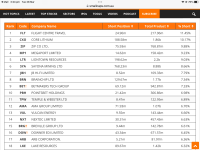Not related to Brainchip but a good read regarding AI chip from Synopsys.
View attachment 33087
According to Allied Market Research, the global artificial intelligence (AI) chip market is projected to reach $263.6 billion by 2031. The AI chip market is vast and can be segmented in a variety of different ways, including chip type, processing type, technology, application, industry vertical, and more. However, the two main areas where AI chips are being used are at the edge (such as the chips that power your phone and smartwatch) and in data centers (for deep learning inference and training).
No matter the application, however, all AI chips can be defined as integrated circuits (ICs) that have been engineered to run machine learning workloads and may consist of FPGAs, GPUs, or custom-built ASIC AI accelerators. They work very much like how our human brains operate and process decisions and tasks in our complicated and fast-moving world. The true differentiator between a traditional chip and an AI chip is how much and what type of data it can process and how many calculations it can do at the same time. At the same time, new software AI algorithmic breakthroughs are driving new AI chip architectures to enable efficient deep learning computation.
Read on to learn more about the unique demands of AI, the many benefits of an AI chip architecture, and finally the applications and future of the AI chip architecture.
The Distinct Requirements of AI Chips
The AI workload is so strenuous and demanding that the industry couldn’t efficiently and cost-effectively design AI chips before the 2010s due to the compute power it required—orders of magnitude more than traditional workloads. AI requires massive parallelism of multiply-accumulate functions such as dot product functions. Traditional GPUs were able to do parallelism in a similar way for graphics, so they were re-used for AI applications.
The optimization we’ve seen in the last decade is drastic. AI requires a chip architecture with the right processors, arrays of memories, robust security, and reliable real-time data connectivity between sensors. Ultimately, the best AI chip architecture is the one that condenses the most compute elements and memory into a single chip. Today, we’re moving into multiple chip systems for AI as well since we are reaching the limits of what we can do on one chip.
Chip designers need to take into account parameters called weights and activations as they design for the maximum size of the activation value. Looking ahead, being able to take into account both software and hardware design for AI is extremely important in order to optimize AI chip architecture for greater efficiency.
The Benefits of AI Chip Architecture
There’s no doubt that we are in the renaissance of AI. Now that we are overcoming the obstacles of designing chips that can handle the AI workload, there are many innovative companies that are experts in the field and designing better AI chips to do things that would have seemed very much out of reach a decade ago.
As you move down process nodes, AI chip designs can result in 15 to 20% less clocking speed and 15 to 30% more density, which allows designers to fit more compute elements on a chip. They also increase memory components that allow AI technology to be trained in minutes vs. hours, which translates into substantial savings. This is especially true when companies are renting space from an online data center to design AI chips, but even those using in-house resources can benefit by conducting trial and error much more effectively.
We are now at the point where AI itself is being used to design new AI chip architectures and calculate new optimization paths to optimize power, performance, and area (PPA) based on big data from many different industries and applications.
AI Chip Architecture Applications and the Future Ahead
AI is all around us quite literally. AI processors are being put into almost every type of chip, from the smallest IoT chips to the largest servers, data centers, and graphic accelerators. The industries that require higher performance will of course utilize AI chip architecture more, but as AI chips become cheaper to produce, we will begin to see AI chip architecture in places like IoT to optimize power and other types of optimizations that we may not even know are possible yet.
It’s an exciting time for AI chip architecture. Synopsys predicts that we’ll continue to see next-generation process nodes adopted aggressively because of the performance needs. Additionally, there’s already much exploration around different types of memory as well as different types of processor technologies and the software components that go along with each of these.
In terms of memory, chip designers are beginning to put memory right next to or even within the actual computing elements of the hardware to make processing time much faster. Additionally, software is driving the hardware, meaning that software AI models such as new neural networks are requiring new AI chip architectures. Proven, real-time interfaces deliver the data connectivity required with high speed and low latency, while security protects the overall systems and their data.
Finally, we’ll see photonics and multi-die systems come more into play for new AI chip architectures to overcome some of the AI chip bottlenecks. Photonics provides a much more power-efficient way to do computing and multi-die systems (which involve the heterogeneous integration of dies, often with memory stacked directly on top of compute boards) can also improve performance as the possible connection speed between different processing elements and between processing and memory units increases.
One thing is for sure: Innovations in AI chip architecture will continue to abound, and Synopsys will have a front-row seat and a hand in them as we help our customers design next-generation AI chips in an array of industries.
Explore AI chip architecture and learn how AI's requirements and applications shape AI optimized hardware design across processors, memory chips, and more.

blogs.synopsys.com
Learning 🏖


